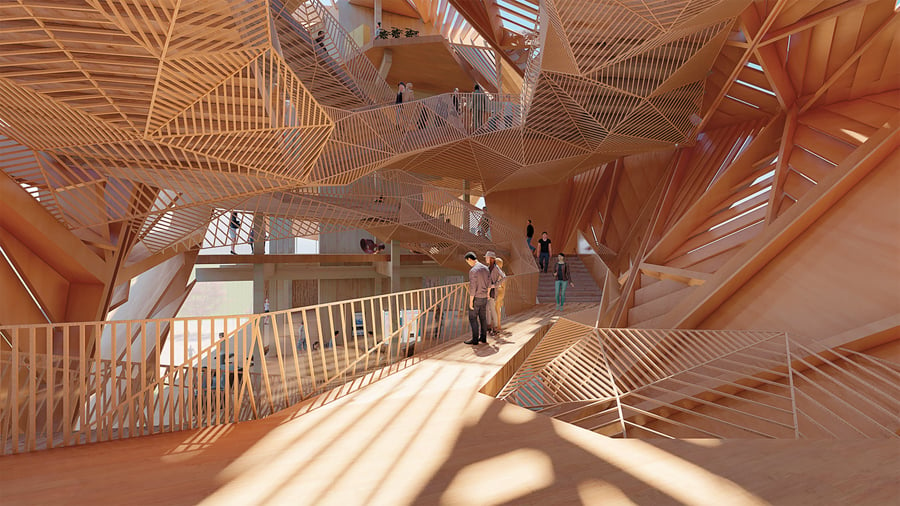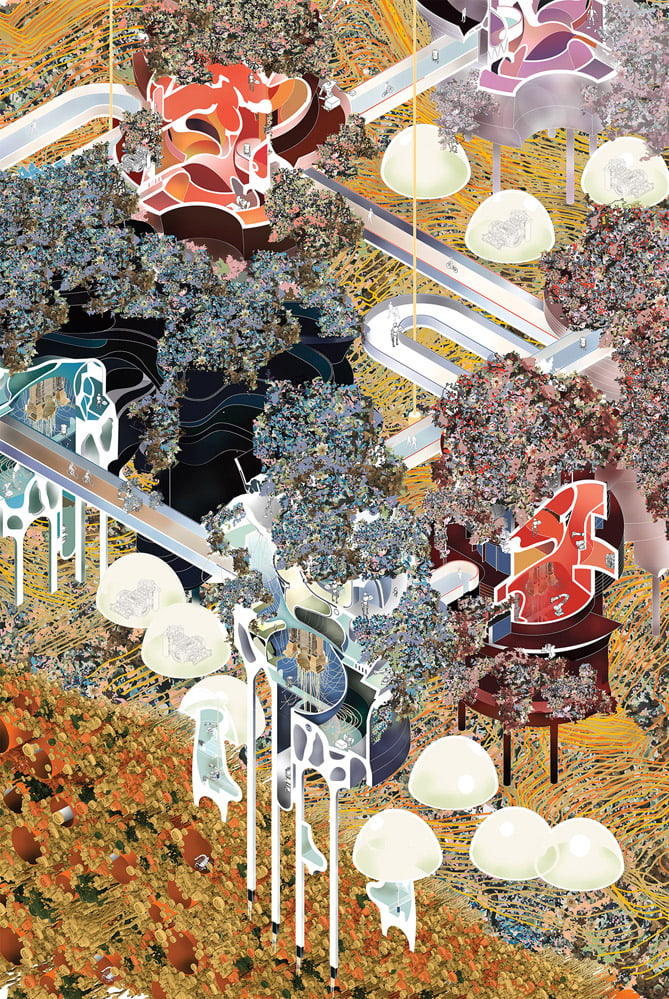
May 19, 2021
Future100: Chenyang Yu Explores How Nature Shapes Sociopolitics
The University of Pennsylvania graduate student addresses issues such as labor imbalance and disaster relief through projects that are rooted in the natural world.

Chenyang Yu’s affinity for nature translates into speculative projects that address contemporary global issues and changing norms in the architecture industry. This source of inspiration shows up in everything from designs of urban farms and gardens to complex timber structures. Yu’s proposal for Cornell Art School on Roosevelt Island in New York City implements an interplay of wood and glass in a multifunctional building that evokes geographic disconnection.
Nature is also the star in Yu’s Tangled project, a series of drawings that address the labor imbalance that the COVID-19 pandemic exposed throughout the country and across industries. An artificial ground layer, built of pipes and cables, props up organic dwellings that are connected by tree root–like transportation networks. The drawings show the varying abilities to work from home among different labor classes. The project also considers the role artificial intelligence might play in this scenario. The intertwined structures help to define a divide between a “techno-bourgeoisie and a techno-proletariat.” Throughout her work, Yu harnesses architecture and illustration to shed light on significant sociopolitical and environmental issues.
“Disaster relief is something I’ve always been interested in,” she explains. “Although the quick construction of temporary physical housing is essential, I’m also interested in the work of reconstructing the collective mental health of local communities by providing comforting spaces that can collect their old memories, thereby making architecture perform beyond providing housing.”

Visit metropolismag.com/future100 to see more groundbreaking student work.
CHENYANG YU
University of Pennsylvania
Graduate Architecture
NOMINATOR: Andrew Saunders, Associate Professor, M.Arch Program Director
Yu’s portfolio derives inspiration from the natural world. In a design for an urban moss garden, Yu addresses the problem of illegal moss harvesting. In a proposal for a residential co-op and farm, she uses the lens of food to “explore the interdependence between nature and man.”
You may also enjoy “A Library in Japan Takes Design Cues from the Forest”
Would you like to comment on this article? Send your thoughts to: [email protected]
Register here for Metropolis’s Think Tank Thursdays and hear what leading firms across North America are thinking and working on today.





